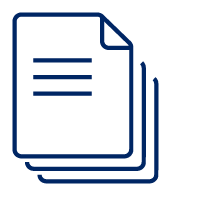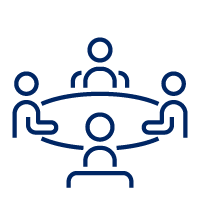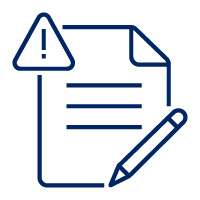What is self-reported information?
Self-reported information is outcome and experience feedback that is translated into structured information to guide decision-making at all levels of the health system.
Self-reported information is collected from patients, carers, the community and staff. It tells us what matters to them and is essential for delivering high-quality care.
Collecting self-reported information enables measurement and analysis for multiple uses at the individual, service and system levels to inform and improve service delivery and planning, and to drive continuous quality improvement.
Routine and systematic collection of self-reported information can be used across all levels of the health system including at the:
- individual point of care to inform shared decision-making and treatment plans
- health service level to inform monitoring and quality improvement
- health system level to evaluate outcomes and value.
How is self-reported information collected?
Information about patient outcomes and experiences is collected in many ways, through surveys and other feedback pathways (detailed in Figure 1).
Self-reported information surveys are when health services directly seek information from the patient, carer, or community through structured questions. These questions are validated where possible and are based on well-established evidence of what matters most to people and what drives positive experiences and outcomes of care.
Other feedback pathways such as compliments, patient stories, website feedback pages, letters, emails and social media are usually initiated by the consumer or community member and can complement survey findings. There are also policy-driven feedback pathways including complaints, open disclosure, and Recognise, Engage, Act, Call, Help (REACH).
Figure 1. A snapshot of NSW Health feedback pathways

Surveys

Social media

Local governance committees and partnerships

Incident management and complaints

Feedback assist widget

Patient stories

Leadership and consumer walkarounds

Feedback programs (for example REACH)
Self-reported information survey streams
The four self-reported information survey streams are rapid view, reflective, point of care and population view.
The survey streams in Figure 2 are different styles of surveys that can be used for understanding the outcomes and experiences of patients, carers, the community and staff.
Rapid view, reflective and population view survey responses are treated confidentially and are not shared in an individually identifiable way with the care providers. For record linkage and other purposes, the information may be identifiable by appropriately authorised administrators of the data collection, in compliance with all relevant NSW and Commonwealth legislation, regulation and policies including NSW delegations.
Figure 2. Self-reported information survey streams
Rapid view
Information collected via a survey within 72 hours of a clinical interaction for rapid-cycle safety and quality improvement.
Reflective
Representative information, collected via a survey following a clinical interaction when outcomes have materialised, for fair comparison and performance measurement along the care journey and across the health system.
Point of care
Information collected via a survey before or during a clinical interaction to inform real-time shared care planning and clinical decision making. This information is intentionally
identifiable so healthcare providers can use it with patients to inform care. It can also be collected longitudinally to enable analysis of trends over time for the individual or patient cohort.
Population view
Representative or census-based information collected via a survey about health behaviours, status, risk factors and general experiences to inform the design and monitoring of preventative health programs, system planning and performance measurement.
More information about the types of self-reported information is included in the
Self-reported information survey streams and collections fact sheet.
Why is self-reported information important?
Self-reported information helps to deliver NSW Health’s vision and improve healthcare services
Self-reported information helps to uncover what is important to patients, carers, the community and staff and how they rate their quality of life and experiences of healthcare. This information helps to deliver NSW Health’s vision.
Positive experiences of care are linked to better patient outcomes including:
- reduced hospital readmission rates
- shorter lengths of stay
- fewer serious safety events
- fewer hospital-acquired complications
- higher self-reported general wellbeing
- improved patient adherence to treatment and medication
- greater efficiency through streamlined processes.
Improving how self-reported information is collected, managed and used across NSW Health will strengthen and streamline our approach
A consistent and coordinated system-wide approach to the collection and use of self-reported information will provide meaningful insights into health outcomes and experiences at the individual, service and system levels.
Strengthened and streamlined self-reported information can:
- reduce the proliferation and duplication of collections, statewide and locally and between cohorts and services
- consolidate the various information technology platforms being used to collect self-reported information
- strengthen the data governance of self-reported information collections
- help to ‘close the loop’ with consumers
- enhance processes for detailed analysis of themes and issues for system-wide learning or action
- improve the integration and triangulation of self-reported information data collections with other sources including safety and quality data
- support quality improvement, program evaluation and the requirements of the National Safety and Quality Health Service (NSQHS) Standards.
How is NSW Health strengthening and streamlining self-reported information?
A system-wide approach is being developed for the collection, use and response to self-reported information
NSW Health is strengthening and streamlining experience and outcome measurement by:
- developing
introductory guidance to improve system-wide understanding of self-reported information best practice and recommended data governance, security and privacy requirements
- trialling a standard statewide rapid minimum question set across several districts to support a consistent approach to experience measurement
- exploring ways to improve staff capability for using self-reported information data for improvement at the local and statewide level
- exploring opportunities to consolidate different information technology platforms used across the system to enable efficiencies and improve usability for consumers and staff
- developing guidelines on the management and use of broader patient feedback, including complaints.
For more information, please contact the Strategic Reform and Planning Branch, Ministry of Health via email:
MOH-PatientMeasures@health.nsw.gov.au